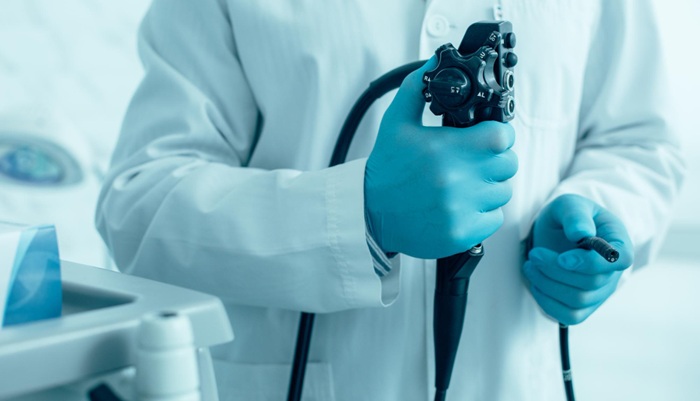Capsule endoscopy is a non-invasive diagnostic procedure used to view the inside of the digestive tract. During the procedure, the patient swallows a capsule equipped with a camera, transmitter, and light. This capsule travels through the stomach, intestines, colon, and rectum to capture thousands of images and transmit them to a recorder worn outside the patient’s body.
The doctor will upload the data from the recorder and compile the images into a video. The results of this examination can identify digestive tract issues and assist in establishing a diagnosis.
Contents
Purpose of Capsule Endoscopy
Doctors usually recommend capsule endoscopy in the following cases:
- Finding the cause of bleeding in the small intestine: This is the most common reason for performing capsule endoscopy.
- Diagnosing inflammatory bowel disease: Capsule endoscopy can detect irritated and inflamed areas in the small intestine, such as in Crohn’s disease or ulcerative colitis.
- Diagnosing cancer: Capsule endoscopy can reveal tumors in the small intestine or other parts of the digestive tract.
- Diagnosing celiac disease: Capsule endoscopy is sometimes used to diagnose and observe the immune system’s reaction to gluten.
- Viewing the esophagus: Capsule endoscopy can examine the muscular tube that connects the mouth and stomach (esophagus) for enlarged veins (varices).
- Polyp screening: Certain inherited syndromes can cause polyps in the small intestine. Capsule endoscopy can be used to check for these polyps.
- Follow-up tests after X-rays or other imaging tests: If imaging tests do not yield clear results, capsule endoscopy may provide additional information.
Capsule Endoscopy Procedure
Procedure Preparation
To help the camera capture clear images of the digestive tract, patients are asked to stop eating and drinking at least 12 hours before the procedure. Patients may also be asked to take a laxative to cleanse the small intestine, which can enhance the images taken by the capsule camera.
In addition, doctors may instruct patients to avoid certain medications before the procedure.
During the Procedure
On the day of the procedure, the doctor will ask the patient to remove clothing so that adhesive patches can be placed on the abdomen. Each patch is equipped with a wire connected to a recording device. However, some devices do not require patches.
The patient will wear the recorder on a special belt around the waist. The capsule camera will transmit images to the patch on the abdomen, which then sends data to the recorder for image collection and storage.
Once the recorder is connected and ready, the patient swallows the capsule endoscopy with water. The capsule’s smooth coating makes it easy to swallow. After that, the patient can go about their day as usual and may even return to work, depending on their job.
The doctor will inform the patient about what is allowed and not allowed, including strenuous activities such as running or jumping.
After the Procedure
Wait two hours after swallowing the capsule before starting to drink clear fluids. After four hours, patients are usually allowed to eat a light lunch or snack unless instructed otherwise.
The capsule endoscopy procedure typically concludes after 8 hours or when the patient notices the camera capsule in the toilet after a bowel movement. Remove the patches and recorder from the body, place them in a container, and follow the provided instructions for returning the device to the doctor. The camera capsule can be discarded.
After the procedure, the body may expel the camera capsule within a few hours or a few days. If the patient does not see the capsule in the toilet within two weeks, contact the doctor immediately. An X-ray may be performed to check whether the capsule is still inside the body.
Capsule Endoscopy Results
The camera used in capsule endoscopy can capture thousands of color images as it travels through the digestive tract. These images are transmitted to a computer with specialized software. The computer compiles the images into a video, which the doctor reviews to identify any conditions the patient may have.
It may take several days, weeks, or longer to obtain the results.
Endoscopy Center at Mandaya Royal Hospital Puri
Mandaya Royal Hospital Puri is equipped with advanced endoscopy technology, including:
1. Basic Endoscopy
Gastroscopy
Gastroscopy is a type of endoscopy used to examine the inside of the esophagus, stomach, and the beginning of the small intestine. During this procedure, the doctor inserts an endoscope through the patient’s mouth.
Gastroscopy is typically performed to identify the causes of symptoms such as:
- Abnormal bleeding
- Persistent or recurring indigestion or upper abdominal pain
- Iron-deficiency anemia (low iron levels)
- Difficulty or pain while swallowing
- Unexplained weight loss
- Presence of blood in stool
- Black-colored stool
Colonoscopy
Colonoscopy is an endoscopic examination used to view the inside of the large intestine, including the rectum and anus. This procedure is performed by inserting an endoscope through the anus to reach the colon.
Colonoscopy is usually conducted to:
- Identify the cause of abdominal pain, rectal bleeding, chronic diarrhea, and other intestinal problems
- Detect colon cancer
- Find and remove polyps if the patient has a history of polyps
- Place stents or remove foreign objects from the colon
2. Capsule Endoscopy
Capsule endoscopy is a procedure that uses a small wireless camera to capture images of the inside of the digestive tract. In this procedure, the patient swallows a small capsule containing the camera. The capsule then moves through the digestive tract, taking thousands of images transmitted to a special recorder worn by the patient. Capsule endoscopy allows doctors to view the small intestine—an area that is difficult to access with other endoscopic methods.
Indications for capsule endoscopy include:
- Finding the cause of bleeding in the small intestine
- Diagnosing inflammatory bowel diseases such as Crohn’s disease or ulcerative colitis
- Detecting cancer or tumors in the small intestine or other parts of the digestive tract
- Diagnosing celiac disease
- Viewing the esophagus for signs of varices
- Checking for polyps in the small intestine
3. Endoscopic Ultrasound (EUS)
Endoscopic ultrasound (EUS) is a procedure that combines endoscopy and ultrasound technology to produce detailed images of the digestive tract and surrounding organs and tissues. An endoscope is inserted into the digestive tract, and the tip equipped with ultrasound emits high-frequency sound waves to capture images of organs such as:
- Lungs
- Pancreas
- Gallbladder
- Liver
- Lymph nodes
In some cases, doctors may use a small needle attached to the endoscope to take tissue or fluid samples (biopsy).
Indications for the EUS procedure include:
- Examining tissue damage due to disease or swelling
- Detecting cancer and determining its spread to lymph nodes
- Determining how far a tumor has spread
- Identifying cancer stages
- Providing additional information from other imaging results
- Taking tissue samples for biopsy
- Draining fluid from cysts
- Injecting medication directly into targeted areas, such as tumors
4. Endoscopic Retrograde Cholangiopancreatography (ERCP)
Endoscopic Retrograde Cholangiopancreatography (ERCP) is a procedure that combines upper digestive tract endoscopy and X-ray imaging to detect and treat problems in the bile ducts and pancreas.
Doctors may recommend ERCP if the bile ducts or pancreas experience:
- Leakage
- Narrowing
- Blockage
Causes of these conditions may include:
- Gallstones from the gallbladder blocking the bile ducts
- Infection
- Acute pancreatitis
- Tumors or bile duct cancer
If you wish to visit Mandaya Royal Hospital Puri, use the Chat feature via WhatsApp, Book Appointment, or the Care Dokter app, which can be downloaded on Google Play and the App Store to make your visit easier, check queue numbers, and access complete information.


